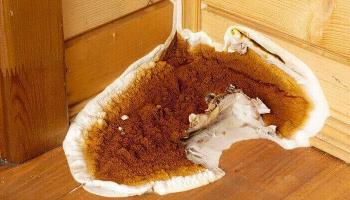April 24, 2022
Damage From Trees
Trees are pretty but trees are also destructive when growing too close to a property. They don't even have to be within the boundary of a property you own or are buying, it could be a neighbour's tree which can be an issue in itself.

Sometimes trees can be the source of damage to property. Perhaps your property is the cause or a neighbour is. It is important to know if there is a potential issue you may face. The valuer may comment on it.
Potential Damage
Trees can be a source of decoration, and provide welcome or unwelcome shade. Below ground level, there can be dangers lurking from the roots.
There are three common issues that you may come across.
Drains
Roots grow outwards and through anything, they come across when they can. Drains are a common one. Decay or faults in drains can allow roots to get inside both growing to cause a blockage or damaging the drains themselves.
Foundations
Some properties are built on top of what is called shrinkable clay soil.
When there are prolonged dry spells tree roots can dry out the soil the foundations sit on. This caused the soil to shrink. The effect of this is that it can cause subsidence and cracking in the walls of the property may be evident as a result. Often you will see this most around windows and doors.
Trees
In some circumstances, the removal of trees can lead to a situation referred to as heave. This effect is where the removal of the tree means no moisture is being removed from the ground. The clay in the ground expands due to the high moisture and can cause the foundation to move up. Which in turn can cause as much damage like subsidence.
Overhanging Tree Damage
Sometimes a tree can be close enough to a property that its branches extend far enough to reach the property and start causing issues such as blocking gutters. I have seen situations where branches have grown under roof tiles and into the attic space. In another example, I have also seen branches growing down a gutter from roof level all the way down and into the drains.
Situations like this can be resolved by maintenance to the tree and keeping it pruned back from the property.
Responsibility for trees
It can be difficult to deal with trees that are or could cause damage to your property.
If for example, a tree is on a neighbour's property where do you stand? If it overhangs above ground and does so within your boundary, you can cut it back to the boundary line. The same with roots underground. If they are on your property you can cut them back, again, to the boundary.
The issue is that if you damage the tree as a result of cutting it back, you could face action from the owner of the tree.
It can be a complex legal issue, especially where a neighbour is unwilling to co-operate.
Neither a lender nor an insurance company can force you to cut a tree down. But note that if you suffer from subsidence in the future related to that tree, your insurer may refuse cover. Equally, a lender may refuse to provide a mortgage on the property.
Valuer recommendations
If trees are a concern your valuer may recommend a specialist takes a look at them and reports back to the lender before agreeing on a mortgage. Any work required will likely be a condition of the mortgage offer or the lender make require the work to be completed in advance by the current homeowner.



Comments (0)
Want to comment on this page? Login or Register.